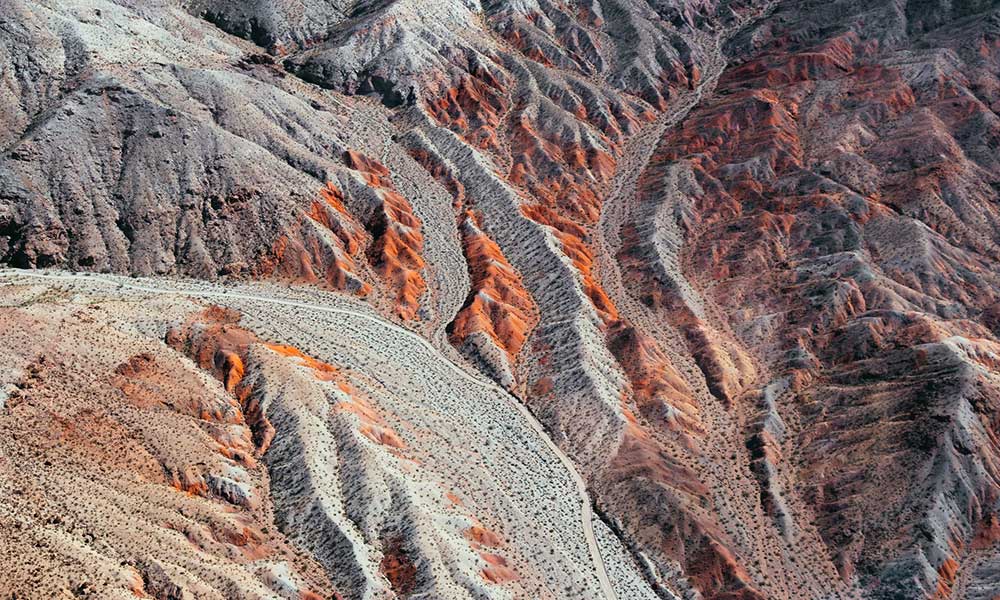Although the California Santa Ana winds are known for hot winds, contributing wild fires and allergies, they can also make for excellent conditions for surfing as they blow offshore cleaning up any chop in the water and leaving glassy surfing conditions.
Santa Ana winds can make already good surf in San Diego even better because the offshore winds lift up the the wave peaks making them higher and grooms the entire wave making it glassy.
Are Santa Ana Winds Good For Surfing?
Yes, Santa Ana winds are good for surfing in San Diego and Southern California.
Santa Ana winds blow offshore moving from east to west and clean up the waves, leaving perfectly groomed glassy and barreling surfing conditions in San Diego.
If there is a strong long period swell, the Santa Ana winds can actually give a little more surfable height to the existing wave face as the wind pushing against the breaking wave face lifts the lip a little higher before the wave breaks.
Strong winds can also knock the tops off of smaller, less powerful waves and can help to diminish swells if conditions don’t line up well. The waves will still be clean, but the over powering offshore wind may even make it difficult to drop in if the wind catches under a surfer’s board when they are paddling for a wave.
What Months Do Santa Ana Winds Occur?
The Santa Ana winds commonly develop during the fall season in San Diego and can last until the winter months. They significantly increase the risk of fires because of how dry it makes everything in the region.
October is when there are typically the most winds present as the northeasterly winds begin to blow to the beaches from the coast ranges. Some years, the Santa Ana winds continue to hang around until the spring season.
Santa Ana winds can sometimes occur the same time winter swells begin, making for fun, clean, sizable and memorable surf.
Why Are They Called Santa Ana Winds?
The Santa Ana winds get their name because of the high pressure that is present over the Great Basin and Mohave Desert. It couples with the low pressure that is present throughout Southern California.
The winds often appear to come out of the Santa Ana Canyon where they’re known to blow intensely. The mountains, passes, and canyons present in Southern California help to produce strong winds. Without any mountains present, the wind would be a lot lighter and would be more similar to a gentle breeze. The mountains give more energy and strength to the weather pattern.
The cold air is known to charge the atmosphere as the wind races down the mountain. The wind begins to pile up and races out of the canyon once it squeezes through it.
The wind that moves down a mountain as it moves lower reduces the humidity in the air.
Why Are Santa Ana Winds So Dangerous?
Due to the speed and strength of Santa Ana winds, they are considered dangerous. They’re known to easily break tree limbs and cause a lot of dust to be kicked up into the air.
They’re also strong enough to cause different types of debris to crash into windows. The winds often exceed 40 miles per hour and increase the risk of wildfires due to how dry the climate becomes.
The fire season often begins in the fall when the winds are present and can lead to millions of wildfires in the state of California. This puts millions of peoples lives at risk and can cause damage to thousands of acres in different regions.
Can Santa Ana Winds Make You Sick?
Many people suffer from sinus issues due to how much dust and allergens the Santa Ana wind kicks up throughout the season. The sinuses will start to produce excess mucus because of the dryness present as the humidity significantly drops outside. Due to the excess matter that is present in the air, it causes more symptoms to develop.
Those who don’t typically experience allergies can suffer from a lot of problems because of the increased mold and pollen that starts to circulate in the air.
The winds can even cause some people to produce serotonin. This affects the nervous system and can cause many people to feel intense or hyper.
Some people report feeling ill with a sore and dry throat. They often assume they’ve caught a cold, but the symptoms can continue to persist until the winds die down.
An increase in the frequency of headaches is also a common symptom due to how much pollutants, dirt, and allergens that you breathe in throughout the day, especially for those who spend more time outdoors.
Those who have respiratory issues can also have more health problems during the season because of the poor air quality. This can make it necessary to stay indoors and keep the windows closed.
Some people may rely on an indoor air purifier to keep the air clean and breathe easier.
What Is The Difference Between Diablo Winds And Santa Ana Winds?
The Diablo winds are different than the Santa Ana winds because they’re known as offshore wind events that are present over the Northern California’s Coast Ranges. This increases the risk of fire danger in the San Francisco Bay area. The winds originate from strongly sinking air and last for at least six consecutive hours.
The Santa Ana winds are driven by gravity and are katabatic (caused by local downward motion of cool air) as they drain air from the high deserts.
They’re dry, downslope winds that affect Baja California and Southern California. The air from the winds passes through different canyons and channels and originate inland.
Conclusion
Santa Ana winds can help contribute to fantastic fall and winter surfing conditions in San Diego the can create hollow, barreling waves.







